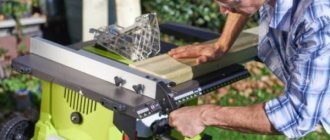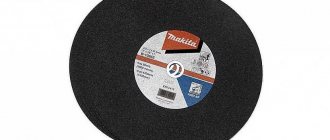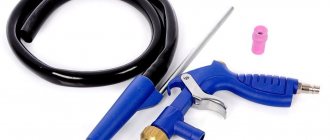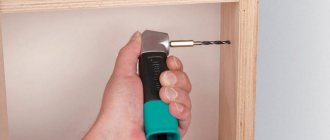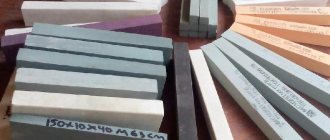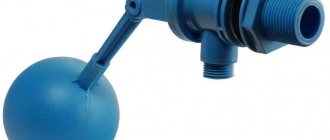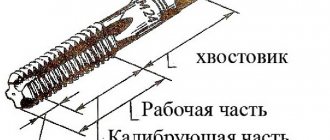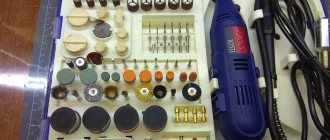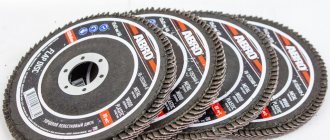Casting bronze bushings stages and manufacturing process
Bronze is used in a variety of mechanisms, functioning as plain bearings. Since bronze is an antifriction material with special ductility, bronze casting bushings are characterized by high strength and durability.
Bronze casting of bushings guarantees high technical characteristics of metal parts. Bronze bushings, cast using a special technology, are necessary for the production of industrial equipment, in particular, for excavators, tractors, various pumps, trucks, and are also used in the production of equipment for mines. Bushings made by bronze centrifugal casting are characterized by high thermal conductivity, low friction, and flexibility. The use of bronze bushings (centrifugal casting is a creation method) makes it possible to reduce the risk or prevent emergency situations, and also increases the service life of the main equipment components.
Those who have repeatedly dealt with vehicle repair know firsthand that strong and reliable metal parts are bronze casting, including bushings. Factories for casting bronze bushings, the best of which is the Moscow Foundry, sell metal products available in stock, and also accept applications for the manufacture of bushings to order.
Manufacturing and casting of bronze bushings
The widespread use of bronze alloys for casting bronze bushings is due to their mechanical reliability, anti-corrosion properties and resistance to negative reagents. Bronze products containing various additives have such advantages (these can be soft, easily processed metals: phosphorus, iron, tin, aluminum). The presence of such additives contributes to the production of durable parts and, as a result, high-quality casting of bronze bushings is obtained; factories actively produce these parts in large quantities, since bronze bushings with the addition of phosphorus are necessary for mechanisms that are subject to heavy loads (meaning generators or the operation of turbines) . Bronze parts with iron and aluminum are shock-resistant and are necessary when working in internal combustion engines.
Bronze bushings: application, alloy grades
The characteristics of the alloy of the bronze pipe for bushings provide the finished products with certain properties that are in demand in specific areas. The table shows the main bronze alloys involved in the production of bushings.
| Tin bronzes | |||||
| BrOTsS5-5-5 | BrOTs10-2 | BrOTsS6-6-3 | BrOS10-10 | BrOTs8-4 | BrOS8-12 |
| BrOF10-1 | BrOS10-10 | BrOTs8-4 | BrOTsSN 3-7-5-1 | BrOF 7-0.2 | BrOS 5-25 |
| Aluminum bronzes | |||||
| BrAZH9-3L | BrAZhMts10-3-2 | BrAZHN10-4-4 | BrAMts9-2 | BrAZhMts10-3-1.5 | BrAZH9-4 |
| Silicon bronzes | |||||
| BrKMts 3-1 | BrKN 1-3 | ||||
Bronze bushings are less hard than steel and iron, but stronger than copper and brass. As the bronze wears, it provides good gliding, which increases the life of the bushings.
The advantages of bronze bushings include:
- strength and hardness;
- plastic;
- minimal friction;
- ease of processing;
- resistance to corrosion, aggressive environments and external influences;
- long service life.
Casting methods for bronze bushings
There are different methods for casting bronze bushings:
- turning
- die casting
- centrifugal casting
Turning is used extremely rarely nowadays, since this technology is not profitable compared to the centrifugal method. Bushings of maximum dimensions are manufactured using die casting. The use of a metal mold, which can be disassembled, provides blanks repeatedly. This method is economically feasible if it is necessary to produce bushings in large quantities.
- Centrifugal casting provides many advantages:
- Minimum metal consumption
- Manufacturing of bushings of various diameters and shapes
- Minimum cost.
Areas of application of bronze bushings and liners
- Mining industry
Bushings, liners, bronze washers for EKG5, EKG8 mining excavators; For crushers KSD1200 (set of bronze bushings: cylindrical, conical, thrust bearing, front, rear); Inserts for crushers SMD-117, SMD-118.
- Hydropower
Bronze impeller bushings for hydraulic turbines of various types and servomotors.
- Automobile and railway vehicles
Bronze inserts for motor-axial bearings of various types for traction locomotives of railway transport; Bronze pin bushings for heavy-duty vehicles.
- Processing branches of heavy industry:
Bronze bushings for main cylinders of horizontal and vertical hydraulic presses; Bushings for forging and stamping equipment of various types; Inserts for rolling mills of various types; Worm wheel crowns of various types.
What is bronze made of? - this is an alloy of copper, mainly with tin as the main alloying component; alloys with aluminum, silicon, beryllium, lead and other elements are also added to achieve certain qualities, with the exception of zinc (this is brass) and nickel (this is cupronickel). As a rule, any bronze bushings contain additives in small quantities: zinc, lead, phosphorus, etc. The main alloys used for manufacturing: BrA9Zh3L, BrO5Ts5S5, BrA9Zh4, BrO10F1, BrA10Zh3Mts2, BrA10Zh4N, BrA11Zh6N6, BrO10S10, BrA10Zh4N4L, BrAMTs 10-2, BrAZhNMC 12-5-4-1, BrKN1-3, BrOTsS 5-7-12, BrO8S12 and others at the customer’s request.
Typically, bushings are used as a consumable material to reduce the friction force in operating components and mechanisms, which makes it possible to extend the service life of the equipment itself, thereby reducing the cost of repairing other parts.
Centrifugal bronze casting
Centrifugal casting of bronze bushings is a popular method for producing castings that have the configuration of bodies of rotation. The required melt composition is placed in a metal mold rotating at a speed of 3 thousand revolutions per minute. Centrifugal bronze casting occurs in the following way: under the influence of centrifugal force, the molten mixture is placed inside a metal cylinder, crystallizes, as a result of which a casting is formed. Forming the melt using this method guarantees the production of castings of increased density.
The peculiarity of casting is that the internal cavity of the product is achieved without the use of special cores, which ensures significant savings in alloy, since a gating system is not used. As a result, the yield of usable castings is up to 95%. In industry, centrifugal casting is used to produce hollow castings; bronze bushings are wear-resistant and have a high metal density.
With us you can place an order for the production of bronze bushings of the required diameter at competitive prices. We guarantee:
- fast order execution
- acceptable prices
- high quality parts
- flexible system of discounts for regular customers.
Description
The sliding bushing is a tubular ring that is installed between the socket in the housing and the shaft. Designed to separate elements that should not be in contact with each other. The bushing is able to withstand medium radial loads. Such parts belong to radial plain bearings.
The bushings are simple in design, work well even in unfavorable conditions (temperature changes, pollution), but they may not withstand long-term rotation at high speed. Easier to maintain compared to sliding bearings, and more compact compared to rolling bearings, while having a lower load capacity and a high friction moment.
They have found wide application in various spheres of human life. They are used in hydraulic mechanisms, in rotating and turning mechanisms of industrial equipment, in the mining industry, etc.
Pros:
- ability to work at high speeds;
- withstands heavy loads;
- installation accuracy;
- ability to work in aggressive environments.
Minuses:
- in most cases, increased lubrication is required;
- it is difficult to fit the required type;
- significant linear dimensions.
Classification
- By production method:
- sintered (for production they use the powder metallurgy method. They have a porous structure);
- rolled (rolled into a ring of flat sheet, leaving a slit. The thinnest);
- machined (turned from a workpiece).
- According to the shape of the finished part:
- cylindrical (represent a pipe of equal diameter);
- shouldered (for the most part the parts are of the same diameter, and towards the end they have an expansion in the form of a washer (shoulder).
- According to the material of manufacture:
- steel;
- bronze;
- polymer;
- cast iron;
- consisting of several materials.
- As required:
- serviceable (have nipples for supplying lubricant. The nipples must be periodically filled with lubricant);
- maintenance-free (do not require lubrication. They are easier to operate, but have a shorter service life).
- By size:
- metric sizes (first comes the abbreviation RSM);
- inch dimensions (designated PCZ);
- with an additional designation (if the designations B/E are present, then the part operates at temperatures from -200 to + 250 degrees Celsius, the designation M indicates that the operating temperature is from -40 to +100 degrees Celsius, while they can provide electrical insulation of parts);
- with flange (designated PCMF).
Polymer sliding bushings
RVS linear polymer bearings are very popular, their main advantages are:
- vibration absorption;
- chemically resistant composition;
- small weight;
- may have magnetic properties;
- There are options with a built-in seal function, with a cavity to retain lubricant, etc.);
- universal, they are used in various fields;
- regulate electrical insulation and electrical conductivity;
- can work without lubrication;
- resistant to edge loads;
- can resist ionizing radiation.
Let's look at the properties in more detail:
- Self-lubricating, maintenance-free. They contain lubricants in a balanced proportion in the polymer composition itself. During operation, the microfibres wear out and thus ensure optimal glide.
- Long service life. The polymers have a homogeneous structure, which eliminates the appearance of grooves, which shorten the service life. There is no abrasive wear of the shaft, because Contains no glass fibers.
- Static and dynamic friction coefficients close to each other. Continuous operation is carried out even at minimum speeds, and with minimal noise. And if a lubricant is used, the friction coefficient will be even lower.
- High non-shrinkability. Such bushings do not absorb water, which makes it possible not to take into account possible changes in dimensions during installation. The fiber seal significantly reduces thermal expansion or contraction, and improves fit at high temperatures.
- Wear resistance. Such parts have minimal wear even under constant heavy loads.
- Resistant to heavy loads. They withstand high pressure and forces, including edge loads. If you choose the right material, then high pressure is also acceptable.
- They have a wide range of operating temperatures. Depending on the type of material, they can operate at temperatures from -200 to +250 degrees Celsius. However, when purchasing, you must take this indicator into account; it is indicated in the technical specifications of the product.
- Improved thermal conductivity. They have an improved fit on the body, thereby ensuring a higher rotation speed during continuous operation. This is achieved through fiber reinforcement.
Standard prices
| Product | Production time | Price |
| Bronze blank 3 kg | 2-3 days | 1620 rub. |
| Cast stand blanks | 5 days | 450 rub. |
| Iron casting | 5 days | 90 RUR/1 kg |
| Aluminum casting | 5 days | 290 RUR/1 kg |
| Bronze casting | 5 days | 540 RUR/1 kg |
Alexey Litvinnik Senior specialist. Assistance in estimating the cost and production time of products made of bronze, aluminum and cast iron.
- ☎
